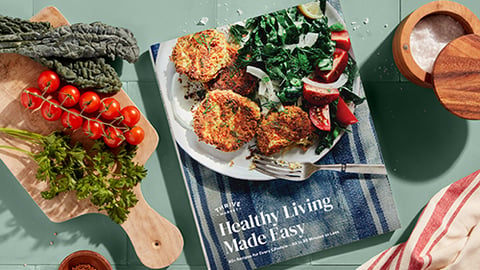Helping Customers Better Their Homemade Meals
Homemade meals carry a cachet of being healthy and nutritious — a notion borne out by several research studies, including two studies published in the Public Health Nutrition journal.
In the first study, researchers used national survey data to examine the relationship between cooking frequency and diet quality among U.S. adults. They found that in households where someone cooked dinner frequently — six to seven times per week — adults consumed, on average, fewer calories, and less fat and sugar per day, compared with households where someone cooked dinner just once per week or not at all.
In the second study, the researchers compared cooking frequency and Healthy Eating Index (HEI) scores among U.S. adults. The HEI measures diet quality — the higher the score, the better. Overall, HEI scores were higher among adults in households where someone cooked dinner at least seven times per week versus those in households where dinner was cooked zero to two times per week.
While research supports the nutritional benefits of cooking at home, there’s still room for improvement, and many shoppers want specific guidance for bettering their own homemade meals.
Healthy Cooking Considerations
The supermarket is the ideal venue to equip shoppers with healthy cooking skills through multiple channels, including in-store and virtual classes and demos, “cook-alongs” with accompanying recipes and tips, and online recipes and videos.
When it comes to the nutritional value of meals and recipes, retail dietitians are experts at addressing trouble spots in the American diet, such as shortfalls on fruits, vegetables, whole grains and dairy, and not consuming enough calcium, potassium, fiber and vitamin D, and too much added sugar, saturated fat and sodium.
Beyond nutrition, team up with your dietitians on several other factors that can help lead to successful programs:
- Tackle the time crunch. Many shoppers have no dinner plan even as mealtime looms. Feature solutions such as 30-minute-or-less recipes, ideas for quick assembly of prepared components, and prep-ahead and freezer-ready meals. Include options for breakfast, lunch and snacks, too.
- Address affordability. For budget-conscious shoppers, offer thrifty ideas based on the week’s specials, and substitutions for more costly ingredients.
- Help build foundational skills. Offer programs and recipes covering a range of knowledge and skill levels. A surprising number of shoppers might want fundamentals like how to stock the pantry for quick meals, knife skills and basic cooking terms.
- Customize to customer demographics. For example, include smaller-yield recipes for one- or two-person households and respectful adaptations of cultural recipes and cooking techniques. Capitalize on trends such as plant-based eating and electric pressure cooker and air fryer meals. Include programs for those with special health concerns such as diabetes, heart health, gluten intolerance and food allergies.
- Increase shopper engagement. Solicit shoppers’ best healthy recipes to feature on your website or social media channels. Offer incentives for attending classes and participating in promotions such as coupons, a sample bag or a small cooking gadget, or raffle off bigger prizes such as gift cards, a piece of cookware or a small appliance.




